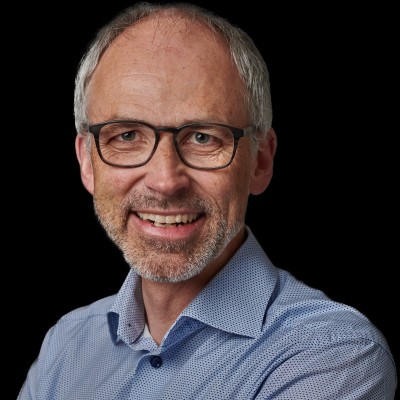Video Transcription

Andy Weymann 00:00
I welcome everybody. Yes, that
Andy Weymann 00:04
is not something out of space. That's really jellyfish. We are deriving collagen from jellyfish. And with that, I would like to speak and give you an overview as the chairman of the company. The reason being involved is I really want, and we are making an impact in wound healing. We all care about wounds. Wound healing is now the next trajectory in wound care. So why really jellyfish? Jellyfish is 500 million years old, very old. And with that, you can think about the collagen that we are deriving as like stem cell collagen. And with that, you have a very different prospect, and you will see that later for the healing trajectory that we are inducing with jellyfish-derived collagen. It is anti-inflammatory. It has an impact on angiogenesis. It is regenerating the tissue. We have been able to show that in multiple publications, and it is safe and stable, as I said before. We have worked on several indications, and we are able right now to manufacture it at scale in our manufacturing facility in Cardiff, Wales. We are working together with the Mayo Clinic, but as well with Orbital Guer in Paris on an orphan disease that we will talk about in a bit as well. It is very good from a biocompatibility perspective and from a healing trajectory. You see all the indications where we have been able to show it in the research and in the publications as well. We are focusing first on wound healing. The reason for that is, as I said before, and I have been involved in wound healing or wound care for many, many years, and we are making here an impact on millions and millions of patients globally. It has a huge impact from a healthcare spend perspective, and as probably some of you have recognized, CMS has been very adamant about the changes of the needed evidence for the reimbursement of new applications in wound healing. Just to give you a visualization, probably much easier to understand why I'm so excited. On the left-hand side, you've seen wound healing of the skin. And as you can see, the anatomical structure is much more pristine. It is truly organized. It is mature, robust. It is really, truly again, skin. On the right-hand side, when you put bovine collagen, which we did many, many years ago, you see a scarring skin. It's chaotic, it's inconsistent, immature, weak, and on top of that, it is a risk for the patients of having further infections in such skin. So that's a reason why there is a huge difference in what we are doing from collagen type zero. Just to give you a perspective, why CMS is becoming so adamant about the needed evidence in the space of collagen-derived publications, 37 studies were published. Only 17 are randomized control trials. When I'm speaking about randomized control trials, that doesn't mean totally blinded and what have you; you need to compare to the standard of care in a clinic. And that makes the difference. In addition, the FDA as well, CMS, and obviously, clinicians require 12 weeks of a success rate. But only very few studies have completed 12 weeks, which is not a long time, not understandable. Sample size needs to be powered, obviously, based on what we want to achieve and what we want to show. That's where we are aiming for. And in a run-in period, everybody knows that you can predict the outcome that you will have at the end, so you can be even more specific about the inclusion and exclusion criteria. So that's where we are aiming for. We are very confident that we will be very successful in achieving that for our first wound care product for diabetes and venous leg ulcer. Secondly, I spoke about the orphan disease designation that we are looking for; epidermolysis bullosa is a terrible disease that affects, unfortunately, mainly only kids and newborns. The skin is blistering immediately because it's not holding to the lower skin, and what we have been able to show with hydrolyzed collagen type zero. All the blue bars on the left are showing that we are able to reproduce and re-energize the collagen expression, which is required to hold the two layers together. On the left-hand side, you see the bars; on the right-hand side, the white line is showing you how it is reconstituting the connection, which is very critical, and we are very excited about that. To achieve that together, the two applications, even though one is a medical device and one is a more pharma approach, with a very diverse team. On the top left side, you have the managerial team; on the right, on the bottom left side, you have the directorship, which brings very different backgrounds, and the Scientific Advisory Board with serial entrepreneurs. Just to give you an idea about where we are right now, we will have 510(k) approval with our wound product in Q1 next year. And in parallel, we are achieving, or we are going to run the first clinical trial at the Necker Hospital in Paris, where we will have, by the end of 2026, clinical data and two products approved in the market. And for that, we are raising just 9 million, in my mind, a very low amount of money that we need to run two parallel trials in different perspectives to ultimately spin out. Then the EB product, obviously, more on the pharma side, and the wound product to a medical device company before we go into further indications, which can be cartilage repair, tendinopathy is a big one, and potentially even drug delivery. So that's where we are today, a huge opportunity to invest with a great team in place and great prospects for the company and for the investors.



